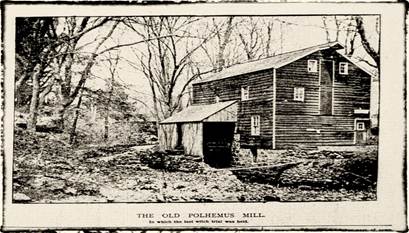BY: Robert Jowaiszas, Community Editor/Reporter
Long before haunted houses and Halloween parties, the hamlet of West Nyack had its own witch legend — the strange and enduring tale of Jane “Naut” Kanniff, remembered today as the Witch of West Nyack.
A Woman of Mystery
It was the year 1816, long after the Salem witch trials and more than fifty years after the last colonial witch case, when Jane Kanniff arrived in the rural area once known as Clarksville — “the area between O’Blenis’ Corners and Pye’s Corners.”
A widow of a Scottish physician, Jane lived with her young son, Tobias Lowrie, near what is now Germonds Road. She wore brightly colored clothes, arranged her hair in unusual styles, and practiced healing arts learned from her late husband’s medical books. Her skill with herbs and tinctures made her something of a local curiosity.
“She just knew things people couldn’t explain back then,” said longtime resident Martha Collins, whose family has lived near the old burial site for generations.
But to her Dutch neighbors — sober in dress and wary of outsiders — Jane’s eccentric ways stirred unease. Her potions worked too well. She owned a black cat and even a talking parrot, which locals called her “demon familiar.” When butter spoiled or cows stopped giving milk, the whispers began.
“She had a black cat and a parrot that talked,” said Rick Donovan, who works near the 1840 Tavern(previously named The Clarksville Inn)“People didn’t know what to make of that back then. Today we’d call her quirky; in 1816, they called her cursed.”
The Trial at De Clark Mill
Rumors swelled until the townspeople decided to take matters into their own hands. They gathered at Polhemus’ Grist Mill along the stream near Germonds Road — the only place with large enough scales for what they planned: a trial by weight against a Bible.
The local physician, Abraham Cornelison, who may have seen Jane as competition, was chosen as judge. Local farmers made up the jury. The crowd assembled as Jane was seated in one side of the mill’s great balance, a massive Dutch family Bible in the other.
The people held their breath as the pin was pulled.
If Jane had been lighter than the Bible, she would be found guilty of witchcraft. But the beam tilted in her favor — Jane outweighed the holy book, and the villagers reluctantly declared her innocent.
“Some of them went home disappointed,” said historian John Scott, author of South of the Mountains (2005).
“They wanted a witch, and instead they got a widow who made better medicine than the local doctor.”

Life After the Trial
Afterward, Jane lived out her days quietly in West Nyack, walking the small hills and creeks with her son. Though cleared of all charges, she remained a local legend — mysterious, solitary, and forever marked by the fear she had inspired.
She likely died of natural causes and was buried near the Old Clarkstown Reformed Church, though no verified marker remains.
“She wasn’t evil,” Collins said. “She was different. That was enough to scare people back then.”

Sketch done by Irish artist Jack O’Lantehrn
Ghostly Legends and Whispers Still Heard
Even centuries later, Jane’s spirit seems unwilling to rest. Along the wooded lanes near the church and the old mill, neighbors still report odd happenings — buckets shaking, doors rattling, and faint laughter on the wind.
“Every year, kids talk about skipping that part of the road when trick-or-treating,” said retired teacher George Larkin. “They swear something shakes their candy buckets near the old stone wall.”
Some locals even joke that their own grandmothers “seemed a little off” after experimenting with herbal teas in the 1960s. “Maybe it was just pot,” one said, “or maybe Jane passed down her recipes.”
The Clarksville Inn, a local landmark(now named The 1840 Tavern)still draws curious visitors. “Sometimes, around Halloween, the lights flicker upstairs,” Donovan added. “Could be bad wiring—or maybe she’s still checking in.”
Her Place in History
According to the Town of Clarkstown, Jane Kanniff’s trial is remembered as the last witch trial in New York State.
“Historians say the event took place in 1816, long after the Salem trials,” wrote Daniel Hanchrow and Clare Sheridan in their version compiled for the Historical Society of Rockland County.
It was an era when a woman’s independence, bright clothing, or simple curiosity could still make her a target of fear.
Are Witches Still Among Us?
No one was burned or banished in West Nyack, but Jane “Naut” Kanniff’s story still stirs something deep — a mix of folklore, fascination, and small-town superstition.
And if you happen to walk near Germonds Road or the Old Reformed Church on a misty autumn night, listen closely. Between the wind in the trees and the murmur of the creek, you might just hear faint laughter — or a whisper reminding you that history never fully fades.
Because even after all these years, one thing’s certain:
West Nyack is, indeed, one Boo-tiful town.
based on historical accounts from the Town of Clarkstown and the Historical Society of Rockland County
